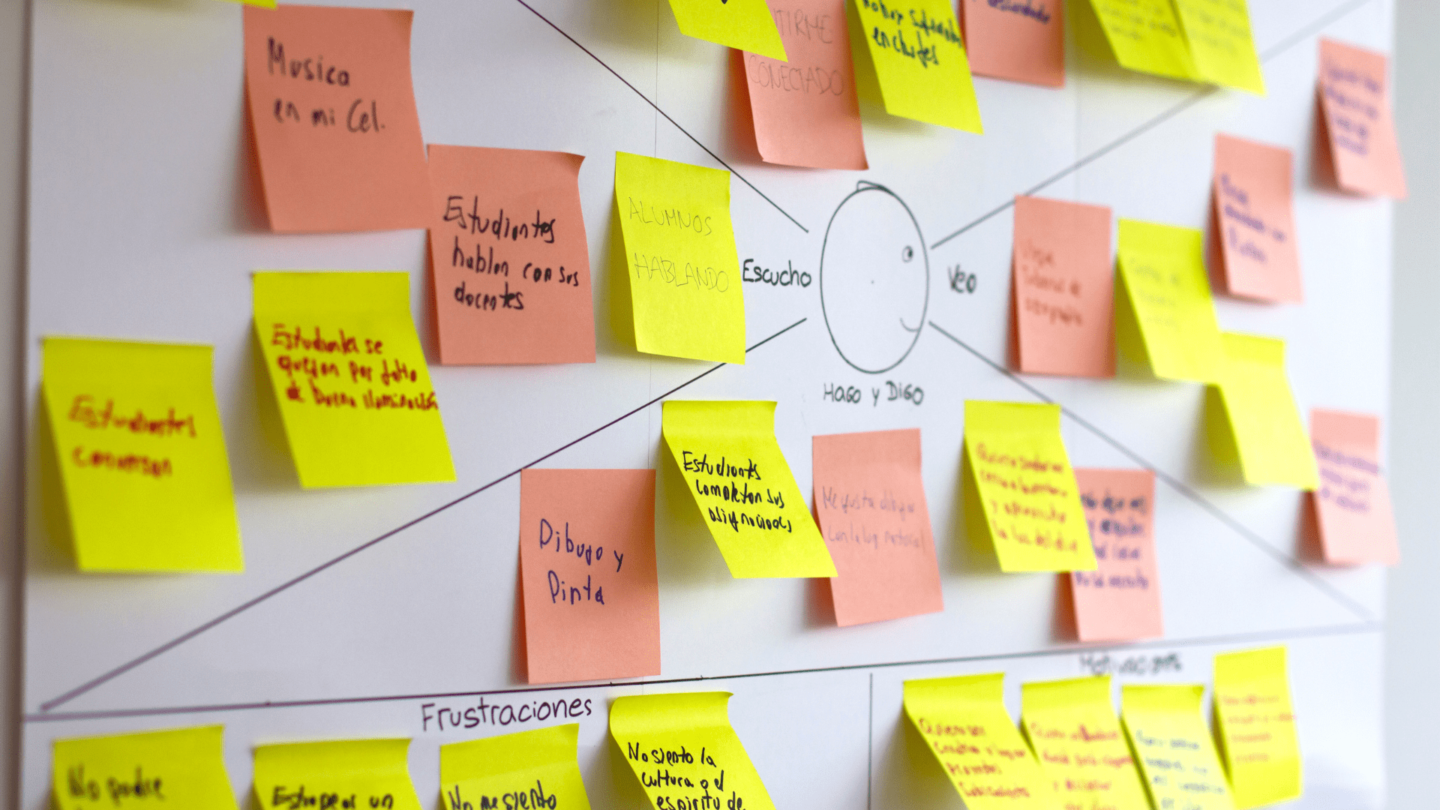
Card sorting – na czym polega badanie sortowania kart w UX?
Nawigację produktu cyfrowego projektuje się najczęściej jedną z dwóch dróg.
- Na podstawie doświadczenia zespołu projektowego, wzbogaconego o domysły, przekonania i wiedzę o najnowszych rozwiązaniach z zakresu UI/UX/IA,
- Na podstawie wyników badań jakościowych.
Druga droga oferuje między innymi card sorting. Przez długi czas badania ux tego typu były prowadzone offline, bazując na fizycznych kartach. Stąd nazwa, która dziś dotyczy także bardziej nowoczesnej i popularnej formy online.
W badaniu card sortingu chodzi o sprawdzenie, w jaki sposób użytkownicy kategoryzują i hierarchizują informacje, jakie kryteria są dla nich najważniejsze i jaką strukturę ma ich wiedza. Z tego bierze się model mentalny użytkownika, czyli zbiór subiektywnych przekonań na temat produktu i jego obsługi. Do tego modelu trzeba dopasować nawigację i architekturę informacji.
Różne podejścia do card sortingu
Sortowanie opiera się na kartach z etykietami, które zawierają nazwy elementów nawigacyjnych i kategorii. Badanie można przeprowadzić na jeden z kilku sposobów:
- Card sorting otwarty – użytkownicy przypisują dowolne nazwy do grup, które utworzyli na podstawie własnego odczucia. Zobaczymy, jak użytkownicy nazwaliby kategorię do informacji jakie ma przekazywać interfejs. To najpopularniejszy wariant.
Pytanie: Mam różne rodzaje funkcji w systemie do zarządzania zadaniami. W jakie grupy je połączę i jak je nazwę? Np. „Lista zadań”, a w niej „Najważniejsze zadania”, „Zadania z kończącym się czasem”. Wtedy użytkownicy mogliby wskazać właśnie na nazwę „Lista zadań”. - Card sorting zamknięty – informacje, nazwy i kategorie są przygotowane przez zespół badawczy, a użytkownicy muszą je połączyć. Sprawdzamy, jak użytkownicy przypisują informacje, do predefiniowanych grup.
Pytanie: Mam kategorię w systemie „Administracja” i „Użytkownicy”, do której kategorii dopasuję „Dodaj użytkowników”. - Card sorting hybrydowy – gotowa talia do posortowania, plus dodatkowe karty puste do podmiany, jeśli będą alternatywne pomysły. Dajemy badanym więcej możliwości i zostawiamy miejsce na ich pomysły.
- Tree testing – w tej wersji zamiast kart, pokazuje się użytkownikom drzewo kategorii i produktu cyfrowego. Zadaniem jest dotarcie do wybranych podstron / produktów / treści. Wynikiem badania są ścieżki wyszukiwania, które badani wybierają. Jest to często forma potwierdzenia wyników z poprzednich badań
Nasi badacze rekomendują połączenie card sortingu z tree testingiem.
Jak przeprowadzić badanie card sortingu?
Choć nadal organizuje się moderowane testy stacjonarne z papierowymi kartami, coraz popularniejsze są testy online. Przeprowadzane za pośrednictwem dedykowanego oprogramowania działającego na zasadzie „przeciągnij-upuść” – Optimal Workshop, UserBit, UserZoom, Maze.co, UXTweak, Userlytics. Ponieważ chodzi o znalezienie realistycznego i spójnego wzoru sortowania, z reguły rekrutuje się 15-40 badanych.
W zależności od wyboru – badanie moderowane lub nie; online lub offline; wariant (lista powyżej) – organizacja i przebieg card sortingu będzie się różnić. Punktem wyjścia do stworzenia własnego badania może być poniższy proces.
- Ustalenie zakresu tematów reprezentujących najważniejszą treść interfejsu. Powinno ich być ok. 40-80. Każdy przypisany do indywidualnej karty. Należy się wystrzegać powtarzania słów na kartach, żeby uniknąć automatycznego dla części ludzi przyporządkowywania kart na podstawie tych samych słów.
- Przydzielenie talii każdej osobie badanej, z zadaniem podzielenia jej na stosy według własnego uznania, zajmując się tylko jedną kartą na raz. Ważne, żeby można było:
– tworzyć dowolną liczbę stosów,
– przyporządkować dowolną liczbę kart do każdego stosu,
– zmieniać zdanie w trakcie badania,
– dowolnie łączyć i dzielić stosy w każdym momencie,
– otwarcie zaznaczyć, jeśli którejś karty nie można jednoznacznie przypisać, - Poproszenie o nadanie każdemu stosowi nazwy. Choć pomysły badanych najczęściej nie będą się nadawać do wdrożenia w interfejs, wymyślone nazwy wskażą zakres kategorii, który mieści się w modelu mentalnym statystycznego użytkownika.
- Jeśli badanie jest moderowane, warto uzupełnić efekty o wywiady z uczestnikami, celem poznania:
– motywów stojących za danymi wyborami,
– różnic w poziomie trudności z przyporządkowaniem poszczególnych kart lub nazywaniem stosów,
– propozycji podziału stosów na podstosy,
– szczegółów wątpliwości dotyczących kart odłożonych bez kategorii.
Card Sorting – podsumowanie
Finałem badań jest analiza. W materiale trzeba znaleźć powtarzające się nazwy stosów; zawartości i tematy, które były grupowane razem najczęściej; a także karty najczęściej odkładane bez przyporządkowania.
Wzory te, razem z odpowiedziami respondentów po fazie sortowania, podpowiedzą, gdzie występują problemy i dlaczego. Być może część tematów nie jest ze sobą kojarzona z powodu niedostatecznej wiedzy użytkowników lub konkretne nazwy nie zostały zrozumiane, bo użytkownicy nie posługują się nimi, podczas gdy w talii kart zabrakło pasującego synonimu.
Natomiast w przypadku wstecznego card sortingu porównuje się ścieżki wyszukiwania i szuka wzorów, aby w przyszłości dopasować drzewo do sekwencji myślenia i działania użytkowników.
Udostępnij





















